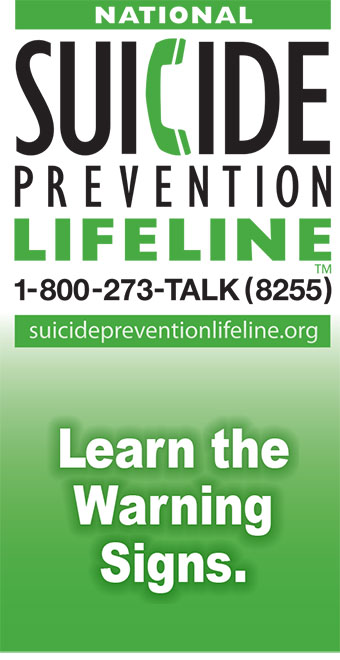 Suicide does not typically have a sudden onset. There are a number of stressors that can contribute to a youth’s anxiety and unhappiness, increasing the possibility of a suicide attempt. A number of them are described below.
Suicide does not typically have a sudden onset. There are a number of stressors that can contribute to a youth’s anxiety and unhappiness, increasing the possibility of a suicide attempt. A number of them are described below.
Depression, Mental Illness and Substance Abuse One of the most telling risk factors for youth is mental illness. Mental or addictive disorders are associated with 90% of suicides. One in ten youth suffer from mental illness serious enough to be impaired, yet fewer than 20 percent receive treatment. In fact, 60% of those who complete suicide suffer from depression.
Alcohol and drug use, which clouds judgment, lowers inhibitions, and worsens depression, are associated with 50-67% of suicides.
Aggression and Fighting, recent research has identified a connection between interpersonal violence and suicide. Suicide is associated with fighting for both males and females, across all ethnic groups, and for youth living in urban, suburban, and rural areas.
Home Environment Within the home, a lack of cohesion, high levels of violence and conflict, a lack of parental support and alienation from and within the family. Community Environment Youth with high levels of exposure to community violence are at serious risk for self-destructive behavior. This can occur when a youth models his or her own behavior after what is experienced in the community. Additionally, more youth are growing up without making meaningful connections with adults, and therefore are not getting the guidance they need to help them cope with their daily lives. School Environment Youth who are struggling with classes, perceive their teachers as not understanding them or caring about them, or have poor relationships with their peers have increased vulnerability.
Previous Attempts Youth who have attempted suicide are at risk to do it again. In fact, they are eight times more likely than youth who have never attempted suicide to make another suicide attempt. Cultural Factors Changes in gender roles and expectations, issues of conformity and assimilation, and feelings of isolation and victimization can all increase the stress levels and vulnerability of individuals. Additionally, in some cultures (particularly Asian and Pacific cultures), suicide may be seen as a rational response to shame.
Family History/Stresses A history of mental illness and suicide among immediate family members place youth at greater risk for suicide. Exacerbating these circumstances are changes in family structure such as death, divorce, remarriage, moving to a new city, and financial instability.
Self-mutilation Self-mutilation or self-harm behaviors include head banging, cutting, burning, biting, erasing, and digging at wounds. These behaviors are becoming increasingly common among youth, especially female youth. While self-injury typically signals the occurrence of broader problems, the reason for this behavior can vary from peer group pressure to severe emotional disturbance. Although help should be sought for any individual who is causing self-harm, an appropriate response is crucial. Because most self-mutilation behaviors are not suicide attempts, it is important to be cautious when reaching out to the youth and not to make assumptions.
Situational Crises Approximately 40% of youth suicides are associated with an identifiable precipitating event, such as the death of a loved one, loss of a valued relationship, parental divorce, or sexual abuse. Typically, these events coincide with other risk factors.



